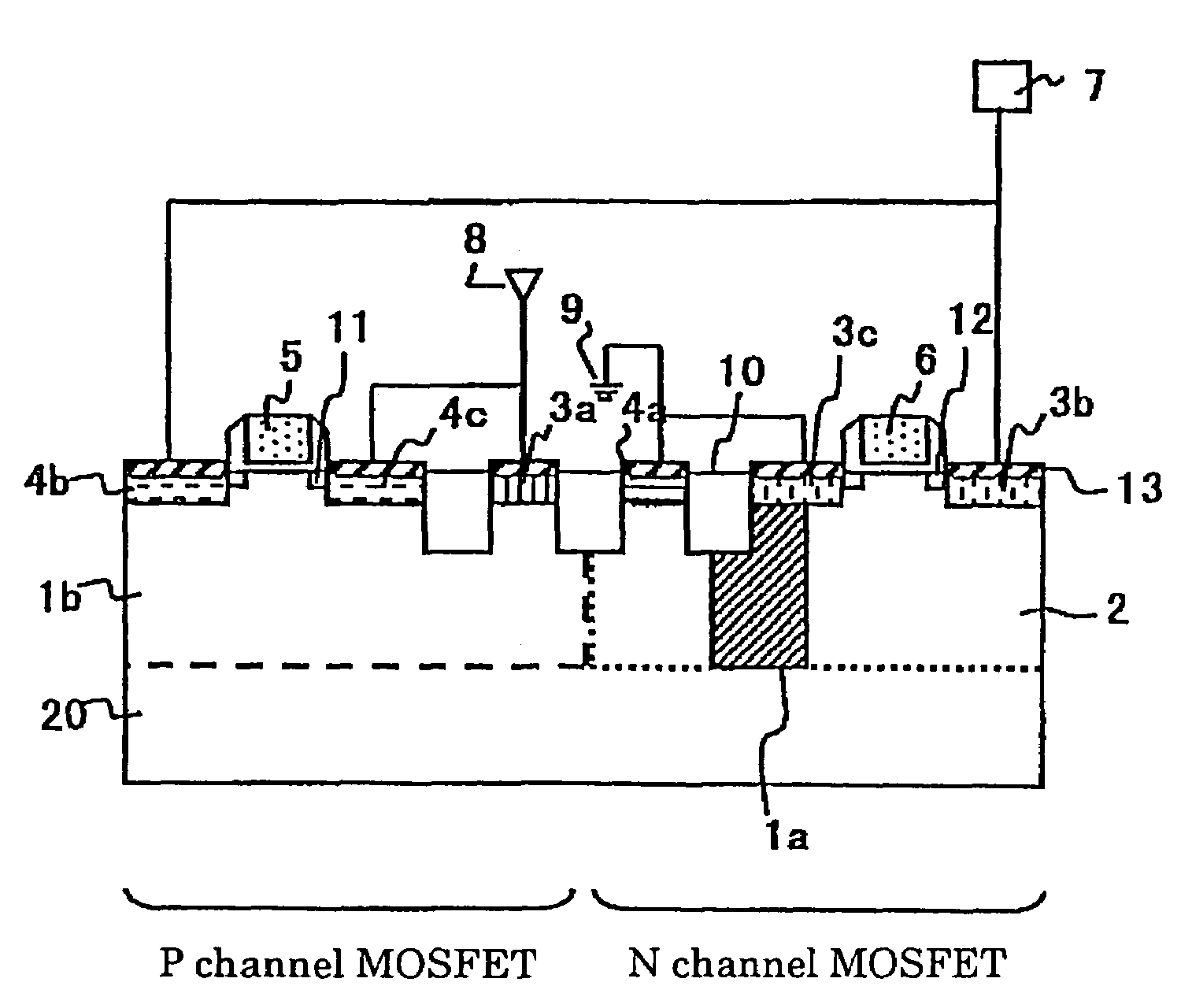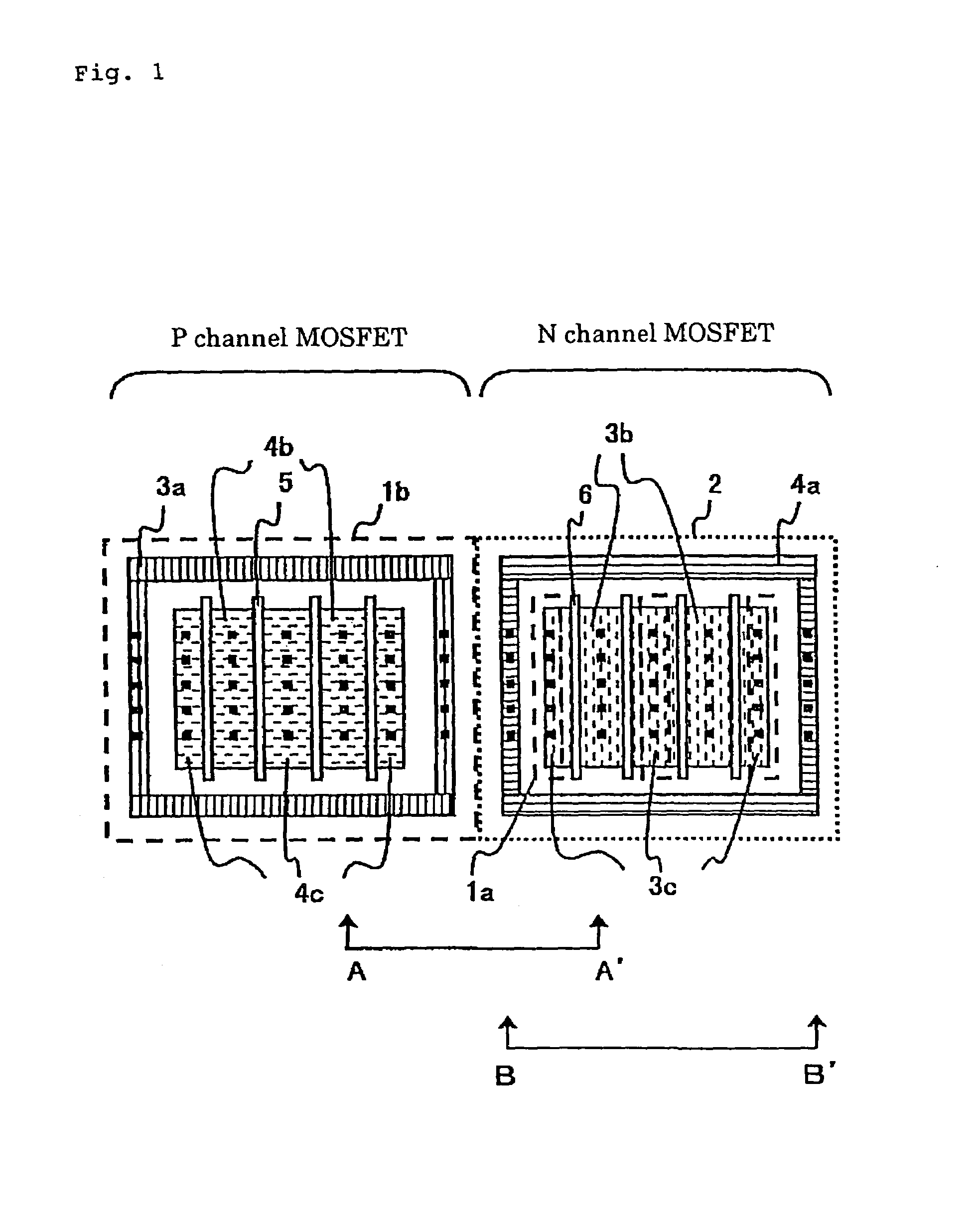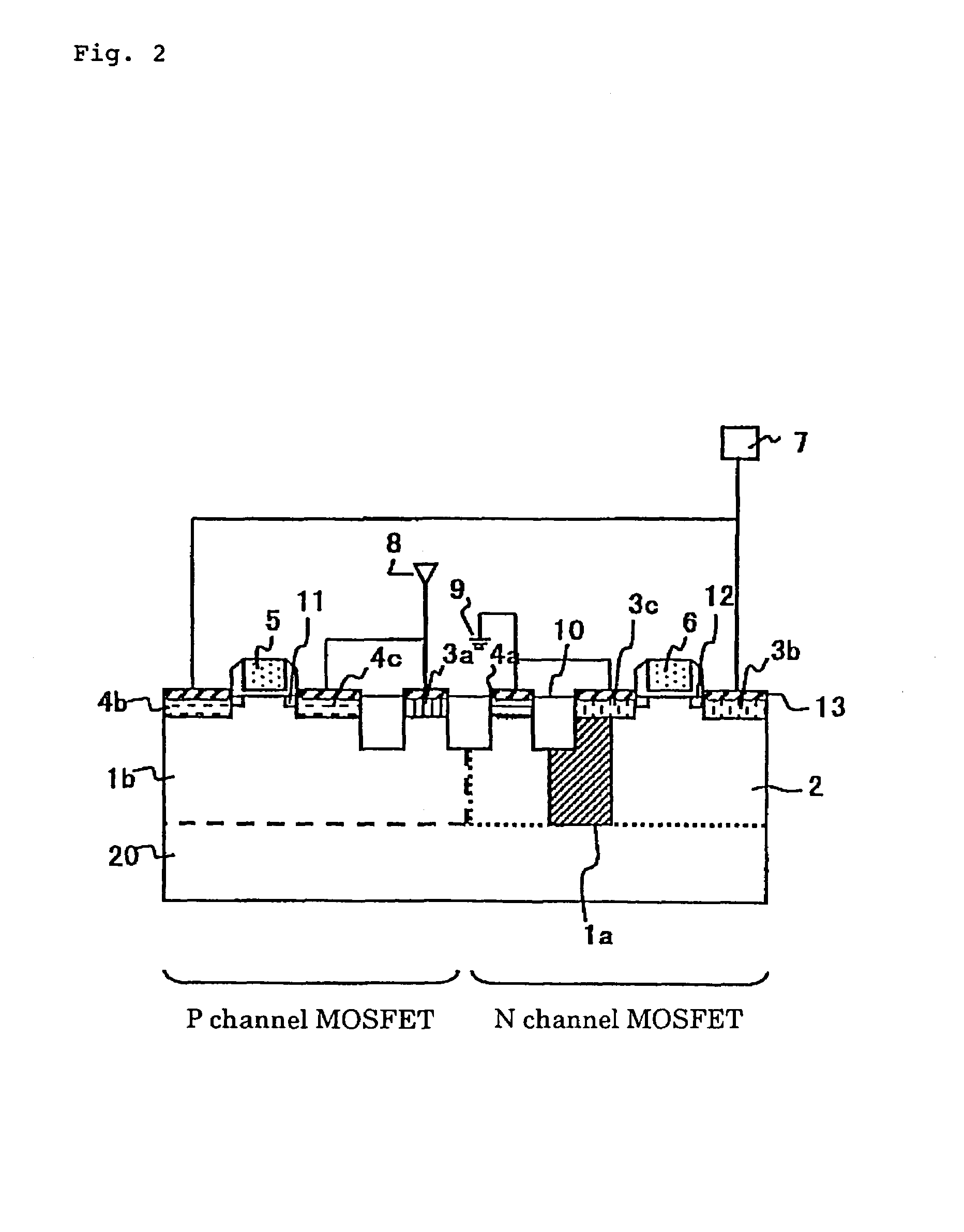Semiconductor device
a technology of semiconductor devices and shields, applied in semiconductor devices, semiconductor/solid-state device details, electrical apparatus, etc., can solve the problems of low protection capability of protection circuit sections, increased above problems, and formation of high-resistance regions, so as to improve the reliability of protection circuits and improve the quality of high-speed operation of protection circuits. , the effect of improving the resistan
- Summary
- Abstract
- Description
- Claims
- Application Information
AI Technical Summary
Benefits of technology
Problems solved by technology
Method used
Image
Examples
example 1
[0063]Referring to the drawings, the present example is described. FIG. 1 is a plan view showing an input protection circuit section of the present example and FIG. 2, a cross-sectional view showing the portion A–A′ of FIG. 1. As shown in FIG. 2, on the surface of a P-type silicon substrate 20, an N-type well 1b (with a phosphorus concentration of 1017 / cm3 or so) and a P-type well 2 (with a boron concentration of 1017 cm3 or so) is formed. In the region where the P-type well 2 is formed, an N-channel MOSFET comprising a gate electrode 6, a source region 3c, a drain region 3b and an extension region 11 is formed. In the periphery of the N-channel MOSFET formation area, a P-type dopant diffusion region 4a is set (FIG. 1), and thereby the electric potential of the P-type well 2 is defined. The P-type dopant diffusion region 4a and the source region 3c, set separated by an element isolation film 10, are both connected with a ground terminal 9 (GND). The drain region 3b is connected with...
example 2
[0073]FIG. 3 shows a cross-sectional structure of an input protection circuit section of the present example. This input protection circuit section is an example in which dopant high-concentration regions or so-called retrograde wells 15 and 16 are formed, at bottom sections of the N-type well 1b and the P-type well 2 in the CMOS of FIG. 2, respectively. The formation of the retrograde wells is performed by conducting ion implantation a plurality of times under different conditions of an injection energy and a dose but using the same mask. In the present example, a phosphorus concentration of 1×1017 cm−3 or so is employed for the N-type wells 1b and 1a, and a boron concentration of 1×1017 cm−3 or so, for the P-type well 2. Further, a phosphorus concentration for the dopant high-concentration region 15 is set to be 2×1017 cm−3 or so and a boron concentration for the dopant high-concentration region 16, 2×1017 cm−3 or so.
[0074]It is well known that setting a dopant high-concentration ...
PUM
 Login to View More
Login to View More Abstract
Description
Claims
Application Information
 Login to View More
Login to View More - R&D
- Intellectual Property
- Life Sciences
- Materials
- Tech Scout
- Unparalleled Data Quality
- Higher Quality Content
- 60% Fewer Hallucinations
Browse by: Latest US Patents, China's latest patents, Technical Efficacy Thesaurus, Application Domain, Technology Topic, Popular Technical Reports.
© 2025 PatSnap. All rights reserved.Legal|Privacy policy|Modern Slavery Act Transparency Statement|Sitemap|About US| Contact US: help@patsnap.com



